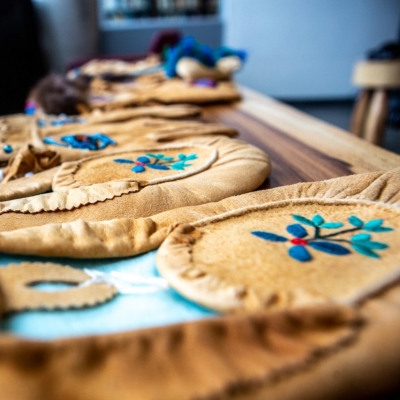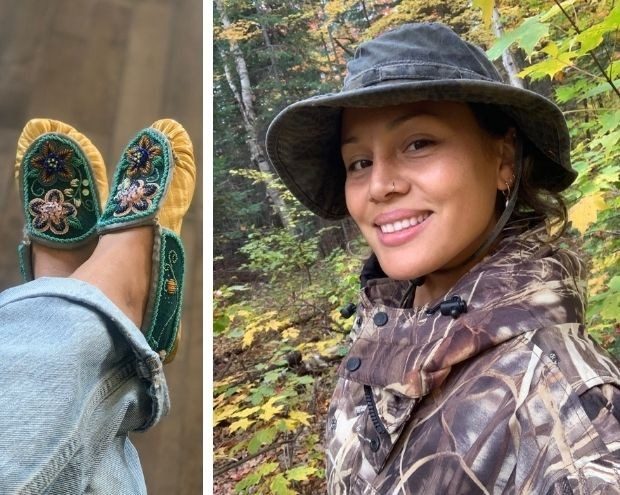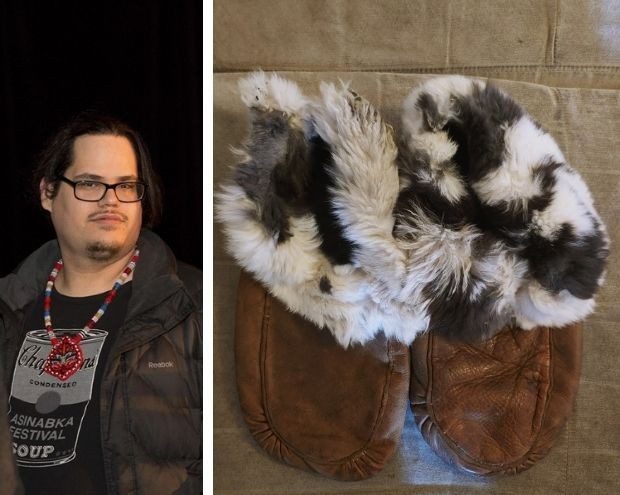ROCK YOUR MOCS
November 11 – 18, 2024
On November 18th, join us for Rocking Those Mocs Around the World, a panel discussion that invites Indigenous community members from around the world to share their thoughts on the creation and celebration of moccasins and culture.

Celebrate and learn about Indigenous cultures during Rock Your Mocs week. Participate on social media using #CUrockyourmocs and #RockYourMocs.

About Rock Your Mocs
Rock Your Mocs is an annual week-long campaign starting November 11 that promotes cultural pride by encouraging Indigenous peoples to share their stories through posting photos of their moccasins. It’s an opportunity for the Concordia community to learn about the diversity of Indigenous peoples and support local Indigenous communities. Join the celebration on social media using #CUrockyourmocs and #RockYourMocs.

Brooke Rice
Brooke Rice is a Kanien’keha:ka graduate student, studying in the Master of Arts Individualized Program, Social Science: “Honouring the Gifts Our Ancestors Left Behind: Leading by Exemplary Kinnections.”
She is also a Concordia alumni, having graduated with a BA in First Peoples Studies and Human Relations. Brooke made her own moccasins out of deer leather, ribbon, size 10-11-13 beads, velveteen and sinew.
Q&A
My first pair ever was a baby moccasin, which was a self-taught process. I learned the most from a group I joined taught by Merit Cross in Kahnawake.
I really enjoyed the process of creativity, patience, and perseverance. There are moments when the thread snaps or the needle breaks and I just want to quit but with a few deep breaths I get back to it. The toughest part is choosing colours! So many beautiful colours to choose from and imagining how they come together for the final creation.
We are mostly known for raised beadwork, floral designs, symbols that reflect our teachings and all creation. Numerous styles of edging as well. All moccasins reveal unique designs of the maker.
Too many to choose from! I love the community and family vibe created at the ASRC. I would say the most impactful memory for me was helping organize First Voices Week, bringing in traditional foods for the “Food Sovereignty” discussion and meeting other Onkwehon:we students.
It means proudly taking up space in a colonial setting. I have felt supported enough to reclaim my power and voice my values. It means challenging the system whenever I can and making impactful changes for the future students to come. The school provides space for us to be seen and offers numerous resources to create events for us by us.
I got to witness my friend's beautiful traditional wedding ceremony in Arizona. People came from all over to be a part of their union and people were adorned in beautiful regalia that reflected their culture. Also, all the sings (a gathering across the confederacy to share new social songs and to see family and friends), great law recitals and ceremonies they attended with me.
It shows our ability to evolve and adapt. We are using social media platforms to connect with all our relatives by showcasing our creations with pride. It keeps us connected to our ancestors while forging new paths forward for the future generations. It shows the youth to be proud of who they are and not to be ashamed to wear their culture, especially in a time of mainstream society that promotes fast fashion. I love seeing all the Indigenous folks beading, sewing, creating and being noticed for their work.
Wearing my moccasins empower me because it connects to my ancestors and the land. Depending on the skin used for the moccasin, each animal has a spirit that holds unique traits. The deer represents gentleness, sensitivity and intuition. When I wear my mocs it reminds me to tread lightly on Mother Earth and to believe in my intuition. I feel very proud to wear the moccasins.

Craig Commanda
Craig Commanda is Anishinaabe from Kitigan Zibi. He is currently in his fourth year of his undergrad in Film Production. Craig made his own moccasins from Moose leather, rabbit fur and Sinew.
Q&A
Making Soup and Bannock for the ASRC crew.
It means that we’re taking up space that wasn’t meant for us. That we’re empowering ourselves to make a better world for our future, and to make meaningful relations.
Through a workshop with my friend, Izzy Enright, at Native Montreal, and another time back in Kitigan Zibi when I was younger.
I enjoy the hands-on work that is involved with making them, and working with natural materials.
Anishinaabe style has many variations, but the most notable are the puckered toes and drawstring. I come from the woodland Algonquin Anishinaabe.
Wearing my moccasins around the ASRC and seeing other people joining in wearing theirs a few days later, starting a mini trend.
To have pride in oneself as an Indigenous person surviving the settler state’s machinations.


